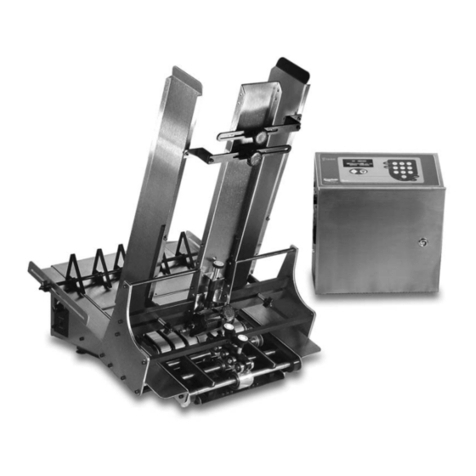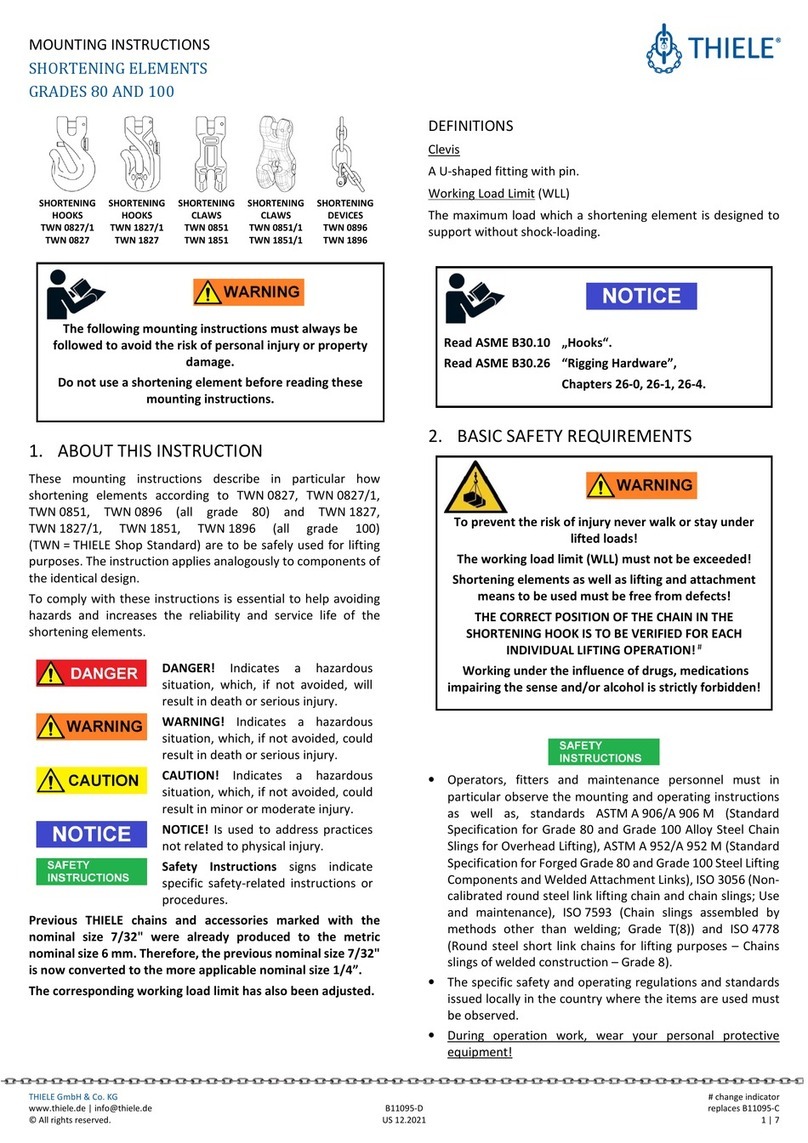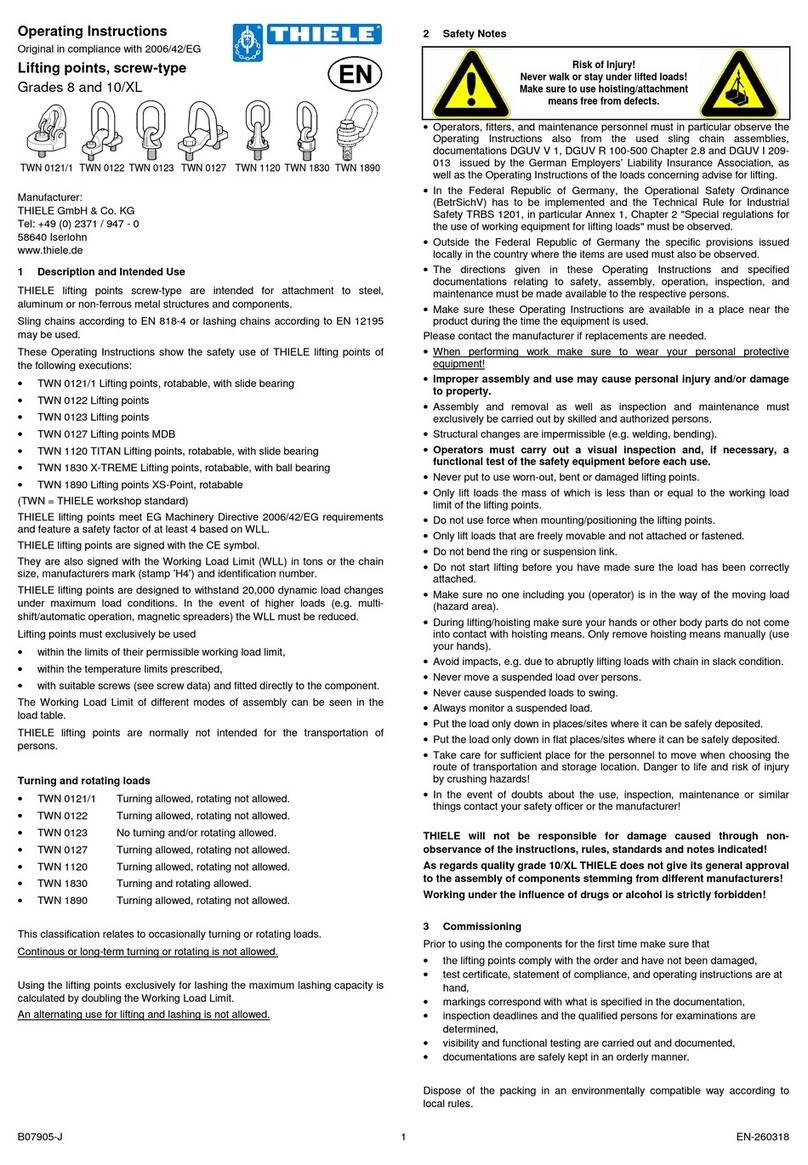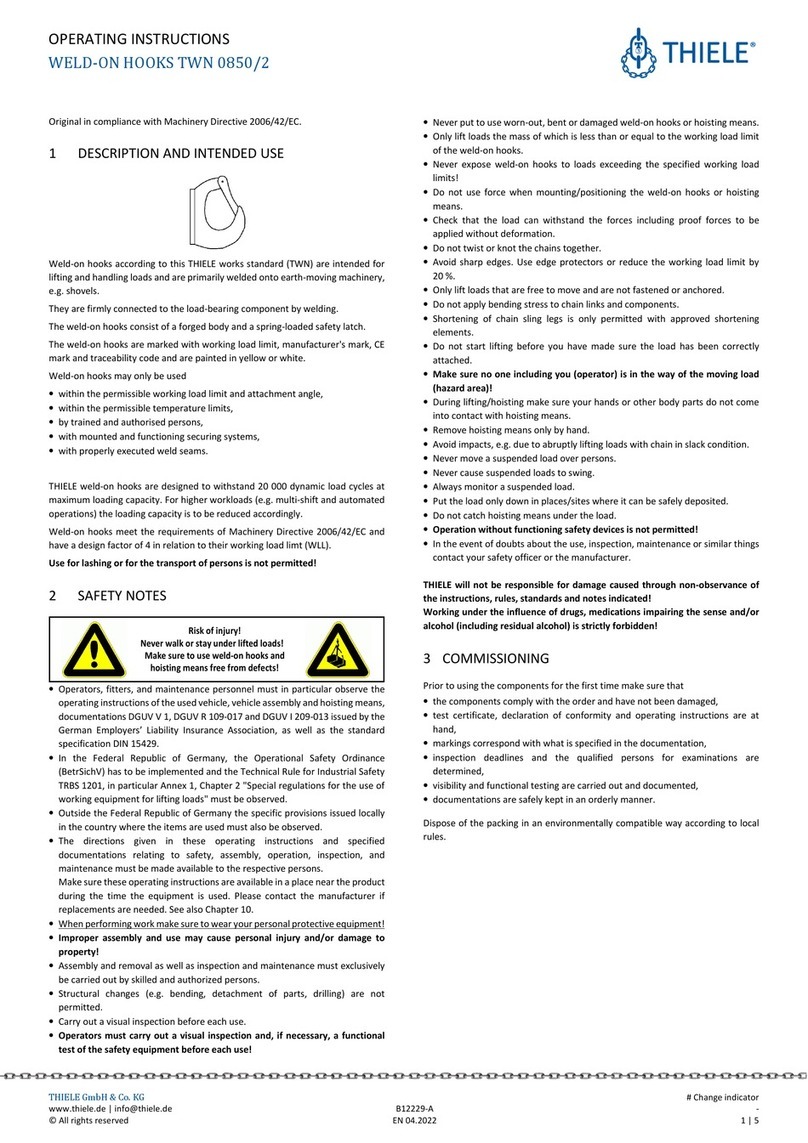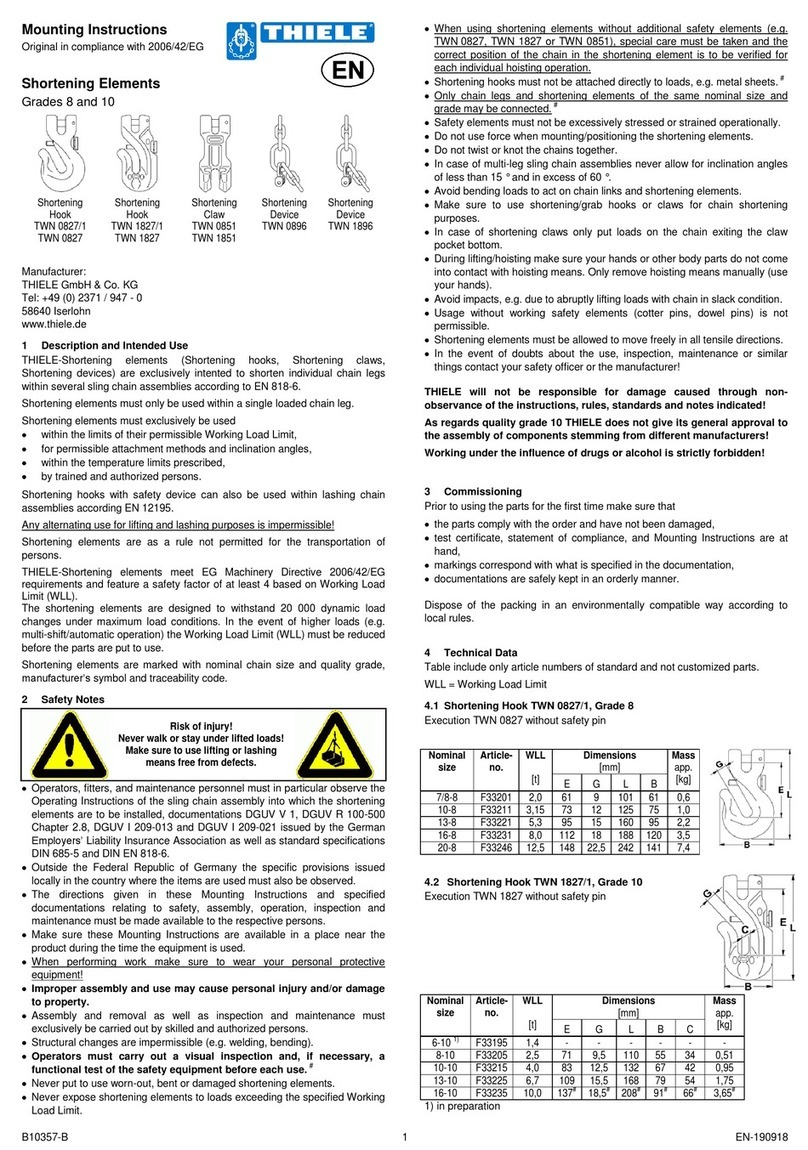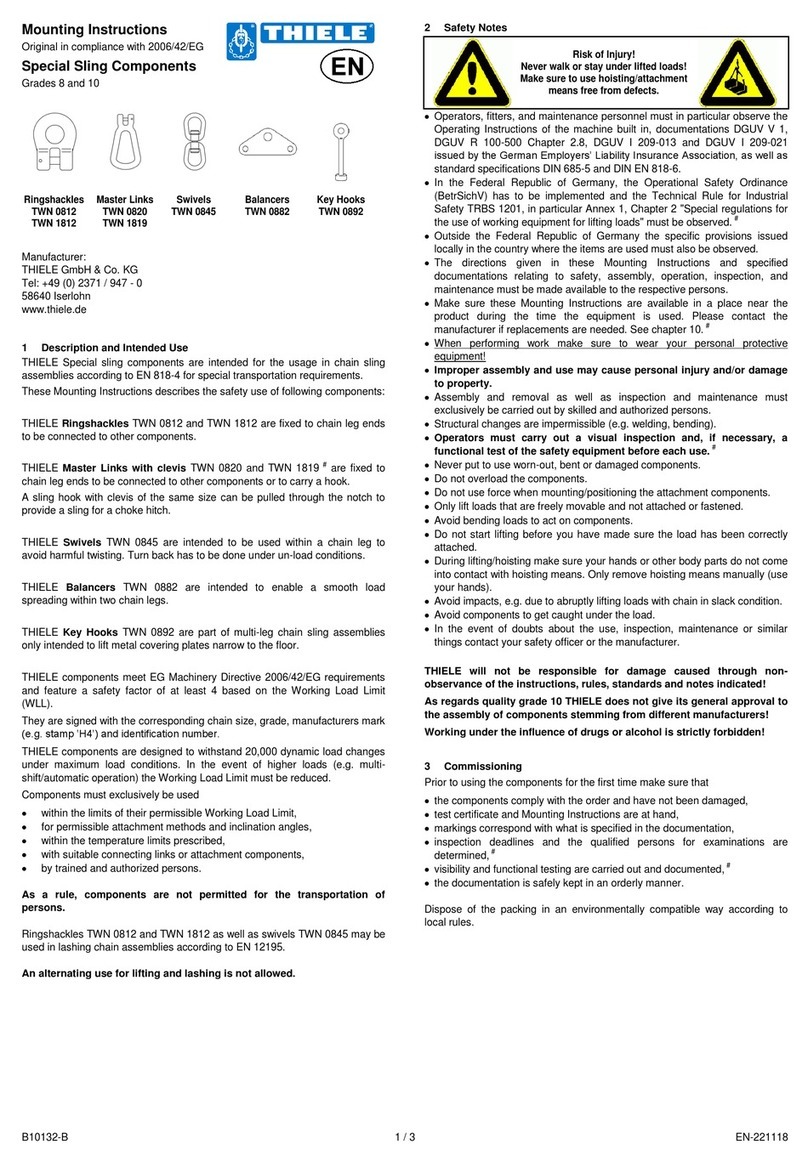
MOUNTING INSTRUCTIONS
SHORTENING ELEMENTS
GRADES 80 AND 100
THIELE GmbH & Co. KG # change indicator
© All rights reserved. US 11.2021 2 | 6
•The directions given in these mounting instructions and
specified documentations relating to safety, assembly,
operation, inspection, and maintenance must be made
available to persons operating and using the shortening
elements.
•These mounting instructions must be available in a place
near the product during the time the equipment is used.
Please contact the manufacturer if replacements are
needed. Also see chapter 11.
•Improper assembly and use may cause personal injury
and/or damage to property.
•Assembly and removal as ell as inspections and
maintenance must exclusively be carried out by skilled,
qualified, trained and authorized persons only.
•Structural changes are impermissible (e.g. elding, bending).
•Operators must carry out a visual inspection and, if
necessary, a functional test of the safety equipment before
each use.
•Never use orn-out, bent or damaged shortening elements.
•Only lift loads that do not exceed the orking load limit of
the corresponding sling chain assembly.
•Never expose shortening elements to loads exceeding the
specified orking load limit.
•When using shortening elements ithout additional safety
elements (e.g. TWN 0827, TWN 1827, TWN 0851 or
TWN 1851), special care must be taken and the correct
position of the chain in the shortening element is to be
verified for each individual lifting operation.
•Shortening hooks must not be attached directly to loads, e.g.
metal sheets.
•Only chain legs and shortening elements of the same
nominal size and grade may be connected.
•No one including you (operator) must be in the ay of the
moving load (hazard area).
•Safety elements must not be excessively stressed or strained
operationally.
•Do not use force hen mounting/positioning the shortening
elements.
•Do not t ist or knot the chains together.
•In case of multi-leg sling chain assemblies never allo for
sling angles of less than 30 ° and in excess of 75 °.
•Avoid bending loads to act on chain links and shortening
elements.
•Make sure to use shortening/grab hooks or cla s for chain
shortening purposes.
•In case of shortening cla s only put loads on the chain
exiting the cla pocket bottom.
•During lifting your hands or other body parts must not come
into contact ith lifting means. Only remove lifting means
manually (use your hands).
•Avoid impacts, e.g. due to abruptly lifting loads ith chain in
slack condition.
•Usage ithout orking safety elements (cotter pins, do el
pins) is not permissible.
•Shortening elements must be allo ed to move freely in all
tensile directions.
•In the event of doubts or concerns about the proper and safe
use, inspection, maintenance or similar things contact your
safety officer or the manufacturer.
THIELE is not responsible for damage caused by
non-observance of the instructions, rules, standards and notes
indicated!
As regard grade 100, THIELE does not give its approval to the
assembly of components sourced from different
manufacturers!
As a rule, shortening elements and chain slings are not
permitted for the transportation of persons.
3. DESCRIPTION AND INTENDED USE
THIELE shortening elements (shortening hooks, shortening
cla s, shortening devices) are exclusively intented to shorten
individual chain legs ithin several sling chain assemblies
according to ASTM A 906/A 906M.
Shortening elements must only be used ithin a single loaded
chain leg.
Shortening elements must exclusively be used
•
ithin the limits of their permissible orking load limit,
•
for permissible attachment methods and sling angles,
•
ithin the temperature limits prescribed,
•
by trained and authorized persons.
THIELE shortening elements meet the
EG Machinery Directive 2006/42/EG requirements and feature
a safety factor of at least 4 based on orking load limit.
The shortening elements are designed to ithstand 20 000
dynamic load changes under maximum load conditions. In the
event of higher loads (e.g. multi-shift/automatic operation), the
orking load limit must be reduced.
Shortening elements are marked ith nominal chain size and
quality grade, manufacturer’s symbol and traceability code.
Shortening hooks ith safety device can also be used ithin
lashing chain assemblies. When used ithin a lashing system,
the maximum lashing capacity (LC) is obtained by doubling the
orking load limit.
Any alternating use for lifting and lashing purposes is
impermissible!
